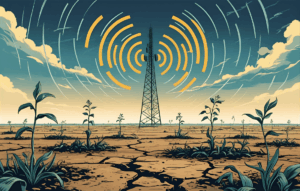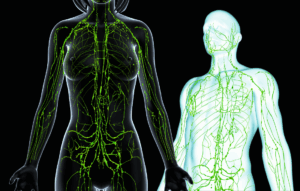A recent study out of Spain, published in The Lancet Planetary Health, should make all of us take a deep breath—and think twice about the air we’re breathing. Researchers from the Barcelona Institute for Global Health examined 754 mother-fetus pairs and found something troubling: exposure to common air pollutants like nitrogen dioxide (NO2), particulate matter (PM2.5), and black carbon was associated with noticeable changes in fetal brain morphology.
Let’s be clear: the brain changes were still within the “normal” range, but subtle shifts in brain structure during the fetal stage could have long-term consequences. These aren’t just theoretical concerns. The study identified actual changes in cerebrospinal fluid (CSF) spaces, including wider anterior horns of the lateral ventricles, enlarged cisterna magna, and a reduction in cortical folding, particularly a shallower Sylvian fissure, which could point to delayed cortical maturation.
Science Behind Fetal Brain Disruption from Air Pollution
To understand the impact, we first need to grasp how these pollutants interact with the developing fetus:
NO2 and PM2.5 are primarily byproducts of vehicle emissions and industrial activity.
Black carbon is a component of PM that results from the incomplete combustion of fossil fuels.
These pollutants can either:
Cross the placenta directly, entering fetal circulation and even the brain;
Or indirectly alter the placenta’s function and activate the maternal immune system, triggering neuroinflammation, oxidative stress, and epigenetic changes.
None of these is good news for a developing brain.
See more research explained on air pollution’s impact on babies’ lung and brain development:
Why the Fetal Brain Is Highly Vulnerable to Air Pollution
Even before birth, the brain is busy wiring itself for a lifetime of learning, movement, and emotional processing. But when environmental pollutants enter the picture, that intricate development can get subtly nudged off-course, sometimes with lasting effects.
1. Critical Windows of Brain Development During Pregnancy
Fetal brain development is a carefully choreographed dance of neurogenesis, synapse formation, and myelination. Disrupting that rhythm — even slightly — during key windows can have lasting consequences. This study found mid-to-late pregnancy (particularly the second trimester and weeks 25–30) to be a window of heightened vulnerability.
2. Cortical Folding and Cognitive Development
The Sylvian fissure and insula are critical structures. Their development is tightly intertwined and indicative of overall cortical maturation. A shallower Sylvian fissure could reflect immature development, potentially tied to future cognitive or behavioral conditions.
3. Cerebrospinal Fluid and Structural Brain Alterations
Widened CSF spaces, especially in the ventricles and cisterna magna, have been associated in other studies with motor delays and reduced adaptive function in children. A larger cerebellum, meanwhile, may sound beneficial, but in neurodevelopmental contexts, it could indicate compensatory changes or altered growth trajectories, especially if the volume shift is occurring due to pollutant exposure.
Indoor Air Quality: The Often-Overlooked Factor
Most discussions of air pollution focus on traffic and factory emissions. But the truth is, indoor air quality is often worse than outdoor air. Many people spend 90% of their time indoors, especially children and pregnant women. Add to that poor ventilation, use of gas stoves, synthetic cleaning products, and building materials off-gassing volatile organic compounds (VOCs), and you’ve got a toxic brew.
The Case for Air Purifiers in Everyday Life
A 2025 study in Chile assessed the impact of low-cost air purifiers placed in middle school classrooms. The results were striking:
Reduced PM2.5 and PM10 levels
Improved student lung function (PEF measurements)
Better cognitive scores in memory, attention, and problem-solving
This wasn’t a lab study—it was a real-world application, showing that clean air has measurable effects on developing bodies and minds.
Pregnancy and Pollution: What the Research Really Shows
We hear about pollution and its effects on adult health all the time—but what about its impact before a child is even born? The latest research offers a startling look at how air pollution during pregnancy can alter the brain development of the fetus in measurable ways.
A Quick Breakdown of the Spanish Cohort Study
Participants: 754 mother-fetus pairs in urban Barcelona
Pollutants Measured: NO2, PM2.5, Black Carbon
Exposure Sources: Home, workplace, commuting routes
Tech Used: Transvaginal neurosonography in the third trimester

Key Findings:
Black carbon exposure: Reduced Sylvian fissure depth
PM2.5 exposure: Increased cerebellar vermis and CSF volume
NO2 exposure: Correlated with changes in lateral ventricles
While no association yet proves clinical outcomes, we’re clearly seeing physical evidence of environmental stress in the fetal brain.
Supporting Evidence from Other Studies
A UK neonatal MRI study found similar ventricular enlargement with prenatal PM exposure.
Animal studies in mice have shown ventriculomegaly and increased cortical volume during fetal development, followed by decreased brain volume postnatally.
Other human cohort studies suggest links between early air pollution exposure and autism spectrum disorders, ADHD, and lower IQ.

The Implications for Neurodevelopment
Even though the changes in fetal brain morphology were subtle and fell within a “normal” range, it would be a mistake to shrug this off. Think of it this way:
If the blueprint of a house is altered even slightly before construction begins, the final result could be fundamentally different.
These early shifts might influence:
Emotional regulation
Executive function
Attention span
Language acquisition
Motor coordination
What Can Be Done? Practical Steps for Pregnant Women and Families
The research may feel overwhelming, but the good news is: there are clear, actionable steps families can take. Protecting a developing baby doesn’t require perfection—just a commitment to minimizing the biggest sources of harm where possible.
1. Minimizing Outdoor Pollution
Avoid high-traffic roads when walking or exercising.
Use apps like IQAir or Plume Labs to monitor air quality and stay indoors during peak pollution hours.
Keep car windows up in traffic and switch to recirculated air mode.
2. Improving Indoor Air Quality
Use HEPA and carbon filter air purifiers, especially in bedrooms and nurseries.
Choose non-toxic cleaning products and avoid synthetic fragrances.
Ventilate frequently, particularly when cooking.
Remove shoes at the door to reduce particulate load.
3. Nutritional Support
Antioxidant-rich foods (berries, leafy greens, omega-3s) can help buffer oxidative stress.
Crucial nutrients like folate, choline, and vitamin D support neural development.
Schools and Public Policy: A Call for Systemic Change
If air purifiers can boost children’s lung function and cognitive performance in classrooms, why aren’t they standard in every school?
The Chilean study provided compelling data showing that low-cost interventions:
Reduced indoor PM levels
Improved thermal comfort
Enhanced academic performance (memory, attention, problem-solving)
It’s clear: clean air isn’t a luxury; it’s a prerequisite for optimal learning and development.
Yet despite this evidence, few educational institutions have implemented consistent air quality strategies. Most school infrastructures still lack mechanical ventilation, rely on outdated HVAC systems, or ignore indoor air monitoring altogether. With children spending over 1,000 hours per year in classrooms, this oversight borders on negligence.
Government bodies, school boards, and public health officials must prioritize air purification as part of a larger movement to create healthier learning environments. That includes:
Funding for air quality improvements, particularly in low-income schools
Mandating IAQ standards for new and existing school buildings
Educating staff and parents on the long-term cognitive and respiratory benefits
If we truly care about the future of our children, we must make indoor air quality part of the core public health conversation.
Why I Recommend AirDoctor Purifiers

If you’re ready to bring clean air home, or into a classroom or nursery, AirDoctor air purifiers are the top-tier choice. These powerful units combine UltraHEPA filtration (capturing particles down to 0.003 microns) with activated carbon filters that remove volatile organic compounds (VOCs), smoke, and odors. They’re independently tested and proven to remove up to 99.99% of bacteria and viruses, making them an ideal option for those especially vulnerable, like pregnant women and young children.
Top reasons to consider AirDoctor:
Multiple models to suit small bedrooms or open-concept living rooms
Built-in air quality sensors and auto-adjust modes
Quiet operation and dimmable display—perfect for nurseries
Trusted by thousands of families and holistic health professionals
Whether you’re dealing with wildfire smoke, urban pollution, or just want to reduce the chemical load in your indoor air, AirDoctor is a serious investment in long-term wellness.
Final Thoughts: Protecting Future Generations Starts Now
Pregnancy is a time of immense vulnerability—but also incredible potential. The developing brain is laying the foundation for a child’s entire future. Protecting that process starts with protecting what mom breathes.
The science is still evolving, but the precautionary principle applies: minimizing exposure to air pollution now can pay off for decades to come. Whether through public policy shifts, better urban planning, or simply investing in a quality air purifier at home, each step matters.
Let’s not wait for more children to be affected before we act. Let’s make clean air a non-negotiable.













